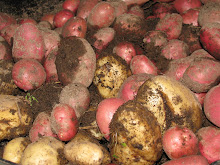Crampton and Krygier (2006) in their paper apply a critical theoretical lense to academic cartography, tracing the origin of the post war scientific movement through to the age of Internet based geographical applications. They describe this approach as a one-two punch, where new mapping applications and a movements to highlight the polictical nature of maps were not apparent when the discipline of cartography first began, resulting in what they describe as cartography undisciplined. Through this critical lense map-making and maps are discussed to examine the assumptions of this particular field of knowledge and challenge the traditional authority of academic cartographers. The paper in general seeks to tackle the links between geographical knowledge and power relations that are ultimately political.
The Robinsonian movement of the post-war era sought to transform cartography to a pragmatic, scientific basis, where validity of data was prominent. Robinson, a cartographer that drove the transformation, was at the time responding to propaganda maps that overtly sought to promote specific interest’s of the people in power. However, this movement that dominated cartography, did not address underlying assumptions of the maps, that are argued in this paper were not value-free as once promoted, but worked to serve specific agenda’s of the map-maker’s and elites that controlled society’s cartography agenda’s. To understand what drives the maps, and what or how they communicate to the user, Crampton & Krygier argue that a challenge to academic cartography is vital to addressing the disparities in cartography the have mostly been considered a technological practice rather than a value laden text.
The technological transition now seen in cartography has, been one of the main factory that has left cartography undisciplined. Another words, maps and map-making are out of the hands of academic cartography, with new mapping application emerging through the digital age, providing the tools for the larger society to formulate maps according to anyone’s agenda. These technologies are commonly known as map-hacking, where open source Internet applications provide a platform for the public at large to become their own map-makers, putting maps in the hands of the users’ not cartographers. These applications did not-the authors point out-emerge from the discipline of cartography but from the software industry. At the same-time, imaginative mapping practices driven by artists are challenging assumptions of geographical space with ever-changing installations that ultimately work to come up against the authority of maps, finding new ways to depict reality.
Over all the authors conclude that these new mapping practices, need further attention within cartography to how they are changing the discipline and offering new possibilities for a critical perspective for society’s ability to represent place and space.
Wednesday, September 23, 2009
Subscribe to:
Post Comments (Atom)

I suggest you join the Public Participation GIS discussion list via http://www.ppgis.net
ReplyDeleteAll the best. Giacomo